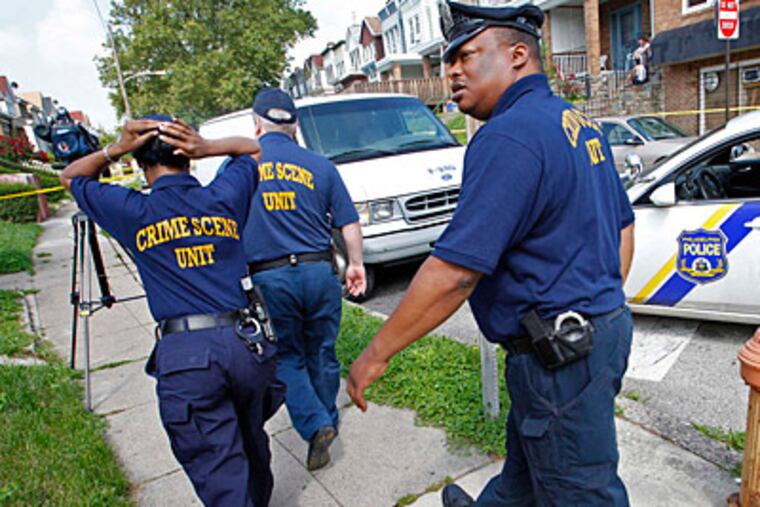Victim by Victim: A year of Philadelphia homicide
IT WAS ABOUT midnight on Dec. 11, a bitterly cold night, but people on a block of Wingohocking Street in Nicetown were out on their porches and the street.

IT WAS ABOUT midnight on Dec. 11, a bitterly cold night, but people on a block of Wingohocking Street in Nicetown were out on their porches and the street.
Most had been awakened by the sound of at least 40 shots from an AK-47 rifle and a handgun tearing through the night in a residential neighborhood near 19th and Wingohocking streets.
The hail of bullets took the life of 23-year-old Isaac Jenkins, the city's 321st homicide victim of 2012.
A young mother afraid to give her name stepped up to the yellow tape marking the murder scene, tears brimming in her eyes.
"This is a horrible area. My son, I'm trying to get him out of here," she said, her voice quivering with fear and anger.
Jenkins' killer or killers fled and remain on the loose, but 43 yellow police markers were left in their wake, marking the spots on the street where bullet casings and fragments had landed.
"Are you serious?" the young mother asked. "All those bullet casings out here."
Through Dec. 20, there were 1,243 shooting victims in the city, which works out to one victim every six hours, 51 minutes.
Amazingly, that figure represents an 8.5 percent decrease from a year ago, but the numbers don't necessarily add up to good news.
The police department's official city homicide tally stood at 327 as of Tuesday - already more than the 324 homicides that were recorded in all of 2011, according to police statistics - despite law-enforcement efforts aimed at putting a big dent in violent crime.
You'd have to go back to 2002 to find the last time the city's homicide total was under 300.
Since then, the tally has remained stubbornly high, thanks to the impulsive, coldhearted thugs who rely on triggers to resolve their disputes.
"A shooting versus a homicide is a question of marksmanship as much as it is everything else," Police Commissioner Charles H. Ramsey said in an interview with the Daily News on Dec. 5.
"So you have to really look at your shootings, because every shooting is potentially a murder."
Compared with other U.S. cities, Philadelphia's homicide rate remains one of the highest, with 21.4 homicides per 100,000 citizens through mid-December.
In Chicago, there were 18 homicides per 100,000 citizens through Dec. 9.
Baltimore's per capita homicide rate still tops Philly's, with 32.6 homicides per 100,000 citizens through Dec. 1, while New York City logged only 4.7 homicides per 100,000 citizens through Dec. 9.
The city's violence epidemic was at its worst point in June, when a homicide was being recorded every 24 hours.
Ramsey said that the tide of killings ebbed somewhat - the city now averages a homicide roughly every 26 hours - thanks to a handful of policing strategies:
* Deploying additional cops during typically violent weekend hours.
* Partnering with federal agencies to deploy a surge of law-enforcement officials in targeted areas.
* Using the city's GunStat program to keep tabs on known violent offenders.
"If you can identify the right people and get them off the streets, then the likelihood of having shootings is lessened," Ramsey said.
Police also have relied on citizens to step up and provide information to put dangerous thugs behind bars.
"I'm never happy or satisfied with the level of cooperation, because there are enough cases that we can cite where it's difficult to get witnesses in," Ramsey said.
"But there are an awful lot of citizens that do get involved and do stand up and do work with us to take back the city streets."
To read the full transcript of the interview with Ramsey, visit PhillyConfidential.com.